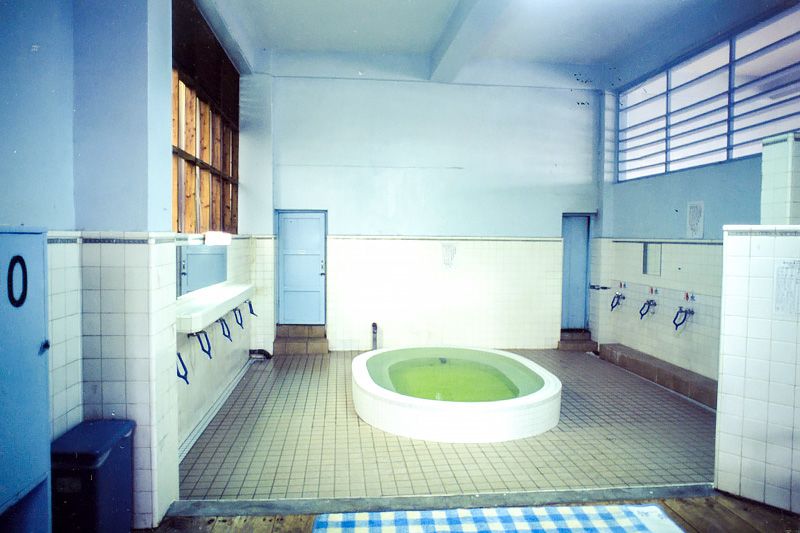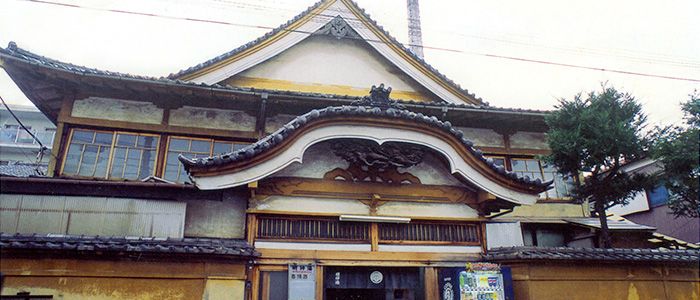
Public Bathhouses: Take a Dip in Everyday Japan
“Sentō” Paradise: Ten Great Japanese Public Bathhouses
Guideto Japan
Culture Lifestyle- English
- 日本語
- 简体字
- 繁體字
- Français
- Español
- العربية
- Русский
Sentō were once ubiquitous, but demographic shifts and social change have caused public bathhouses to disappear from neighborhoods around Japan at the alarming rate of one per day. Even as their numbers dwindle, though, many establishments are steadfastly carrying on the bathing tradition and winning over a new generation of clientele in the process by bringing the sentō in line with contemporary tastes. Below are 10 bathhouses from Hokkaidō to Okinawa that will warm both the bodies and souls of bathers.
Taishōyu (Hakodate, Hokkaidō Prefecture)
Located at the top of a slope overlooking Hakodate’s fishing port, the clapboard-sided Taishōyu brings to mind Hokkaidō’s frontier heritage. The wood-built sentō opened in 1927 and has retained its timeless allure, thanks to diligent care and numerous fresh coats of paint. Bathers will be equally awed by the interior of the bathhouse, which boasts changing rooms that recall the decor of the early days of the establishment.
Taishōyu
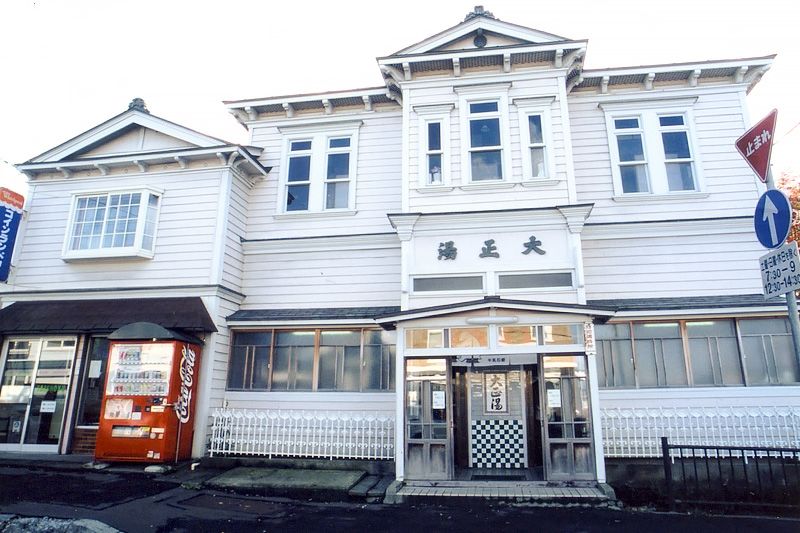 The light pink exterior of Taishōyu gives the bathhouse a stylish appearance.
The light pink exterior of Taishōyu gives the bathhouse a stylish appearance.
Miyoshiyu (Kiryū, Gunma Prefecture)
Built in the early Shōwa era (1926–89), Miyoshiyu once bustled with female workers looking to clean up and relax after their shifts at a silk spinning mill that stood across the street. The establishment still attracts a steady stream of regulars who, along with enjoying a refreshing soak, gather at a small shop near the entrance to grab a quick bite to eat and socialize. Another attraction is the building’s Western design punctuated by a quaint, decorative triangular roof.
Miyoshiyu
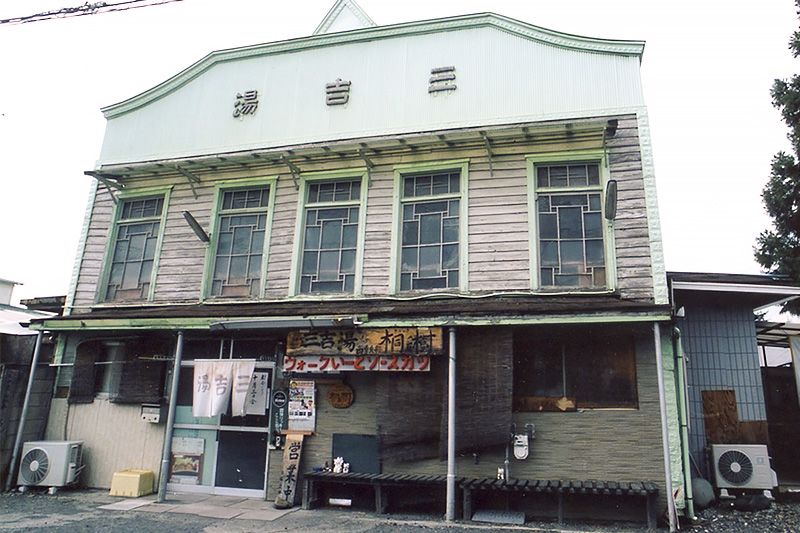 Miyoshiyu is popular among locals as a place to bathe and enjoy a light meal.
Miyoshiyu is popular among locals as a place to bathe and enjoy a light meal.
Tsubameyu (Ueno, Tokyo)
A haven for early birds, Tsubameyu is unusual among sentō for opening its doors at six each morning. People whose jobs or travels bring them to Tokyo at sunup and workers getting off the graveyard shift often form snaking lines outside the building. Constructed in traditional miyazukuri shrine style with curved, gabled roofs, Tsubameyu is Tokyo’s only public bathhouse to be designated an important tangible cultural property. It also boasts the hottest bathwater in the metropolis at a sweltering 48°C.
Tsubameyu
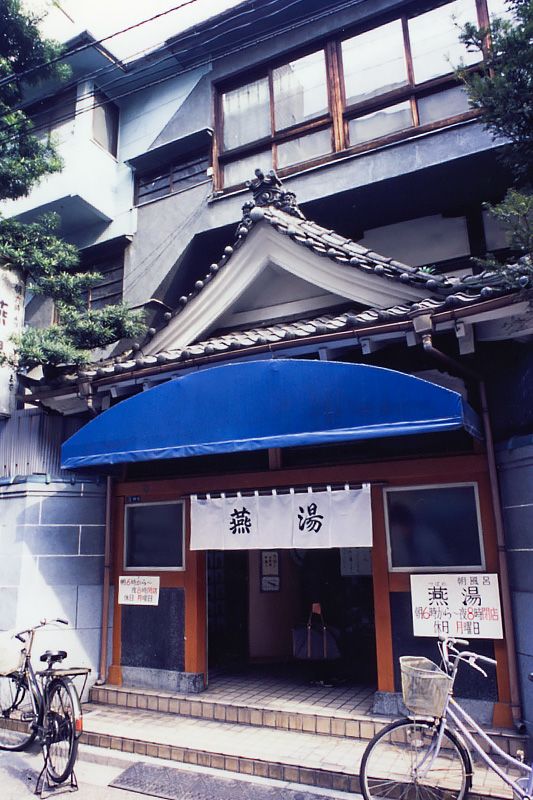 Tsubameyu has been opening its doors to morning bathers for more than a century.
Tsubameyu has been opening its doors to morning bathers for more than a century.
Fukunoyu (Sendagi, Bunkyō, Tokyo)
Patrons of Fukunoyu not only come to immerse themselves in the sentō’s warm waters but also to pick up a bit of good luck. Major renovations to the bathhouse completed in 2011 included remodeling the interior along the principles of feng shui geomancy. The walls are also bedecked with pictures of the shichifukujin, or Seven Gods of Fortune. Adding to the auspicious atmosphere are expansive paintings of Mount Fuji above the tubs in both the men’s and women’s baths.
Fukunoyu
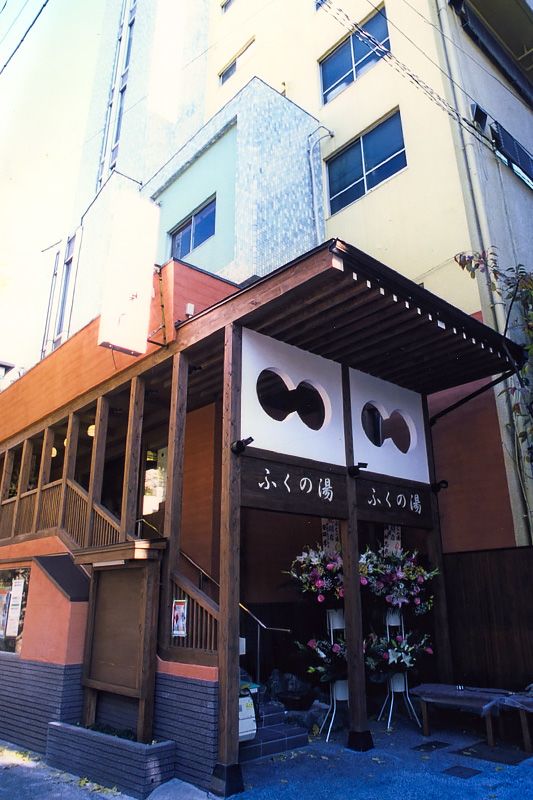 Following renovations in 2011, Fukunoyu was reborn as a fashionable sentō that attracts locals as well as young couples.
Following renovations in 2011, Fukunoyu was reborn as a fashionable sentō that attracts locals as well as young couples.
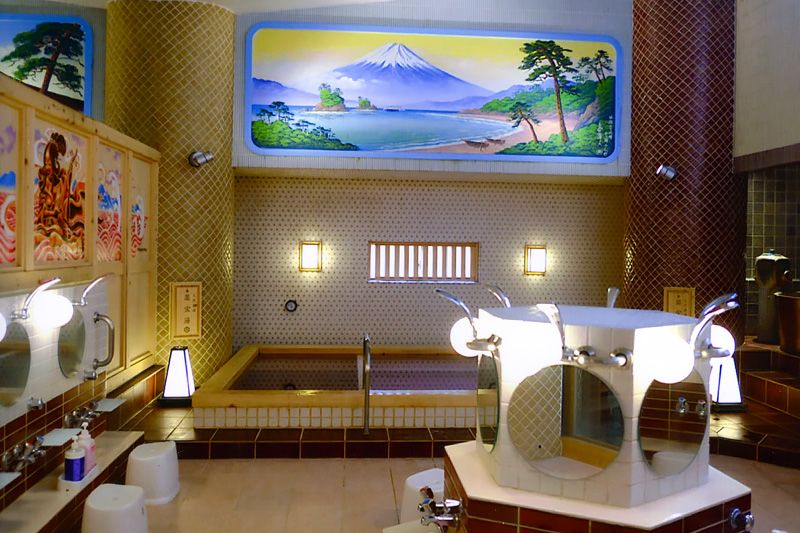 The bathhouse blends Western and Japanese design styles and boasts two distinct landscapes of Mount Fuji.
The bathhouse blends Western and Japanese design styles and boasts two distinct landscapes of Mount Fuji.
Musashi-koyama Onsen Shimizuyu (Koyama, Shinagawa, Tokyo)
First opened in 1924, the third-generation family operation was rebuilt in 2008. Sporting a bold, traditionally styled front gate, the three-story building offers two types of natural hot springs drawn from deep below the sentō. Bathers can also enjoy the typical hot-spring pleasure of soft-boiled eggs prepared in Shimizuyu’s steaming waters.
Musashi-koyama Onsen Shimizuyu
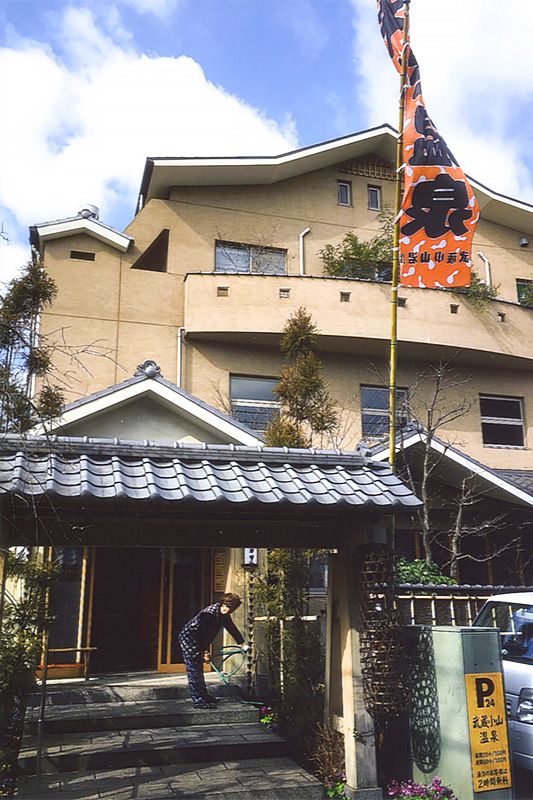 The traditional kidomon gate lends Shimizuyu a distinct Japanese air.
The traditional kidomon gate lends Shimizuyu a distinct Japanese air.
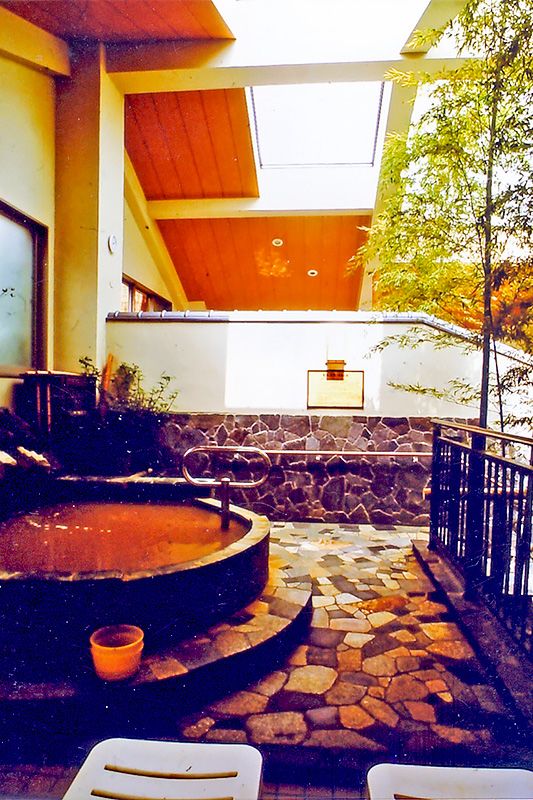 Patrons of Shimizuyu have a variety of soaking options, including an open air bath.
Patrons of Shimizuyu have a variety of soaking options, including an open air bath.
Myōjin’yu (Minami Yukigaya, Ōta, Tokyo)
Myōjin’yu is one of the few remaining sentō in Tokyo still largely in its original state. Built in the miyazukuri shrine style in 1958, the bathhouse is operated by a smiling okami, a female attendant who sits at a bandai booth that straddles the men’s and women’s bathing areas. A major attraction is a giant mural of Mount Fuji created by master painter Maruyama Kiyoto, a specialist in bathhouse Fujis, which stretches across the back wall above the tubs.
Myōjin’yu
 Myōjin’yu retains the curved gables that were a standard feature of sentō built in the early postwar period.
Myōjin’yu retains the curved gables that were a standard feature of sentō built in the early postwar period.
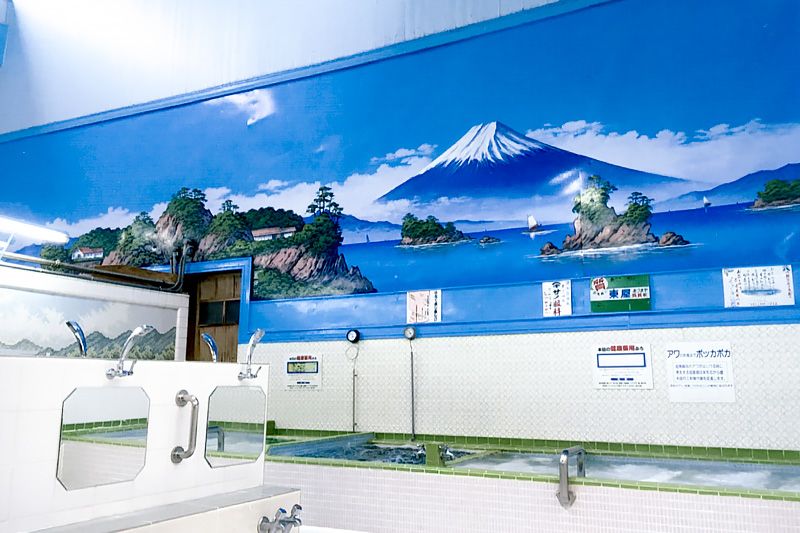 A mural of Mount Fuji painted by Maruyama Kiyoto overlooks the bathing area.
A mural of Mount Fuji painted by Maruyama Kiyoto overlooks the bathing area.
Funaoka Onsen (Kita Ward, Kyoto)
Founded in 1923, Funaoka Onsen stands out among the multitude of historical sentō in Kyoto for its ornate interior. The changing areas are adorned with carvings featuring scenes from the Aoi Matsuri, one of three great festivals of the ancient capital, along with depictions of long-nosed, supernatural tengu and childhood portrayals of legendary warrior Minamoto no Yoshitsune. There are also elaborate openwork screens, colorful tiling, and a small pond to entertain bathers.
Funaoka Onsen
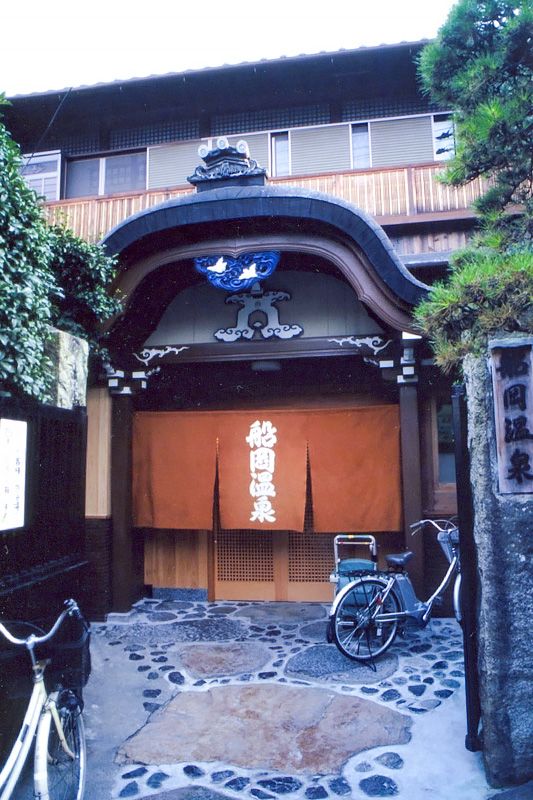 In 2003 Funaoka Onsen became the first sentō in Kyoto to be recognized as an important tangible cultural property.
In 2003 Funaoka Onsen became the first sentō in Kyoto to be recognized as an important tangible cultural property.
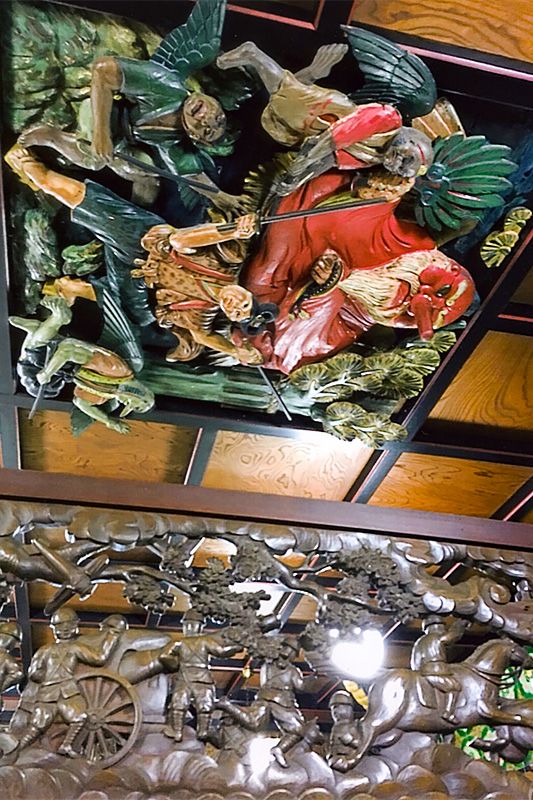 The changing rooms are ornamented by large carvings on the ceiling and openwork screens.
The changing rooms are ornamented by large carvings on the ceiling and openwork screens.
Gengahashi Onsen (Ikuno Ward, Osaka)
The distinct appearance of Gengahashi Onsen reflects an architectural trend around the time it was erected in 1937 of blending Western and Japanese elements. Guests will take note of the incongruous pairing of traditional shachihoko roof ornaments and dual replicas of the Statue of Liberty. True to Osaka’s reputation as the humor capital of Japan, the American icon is a pun on the term nyūyoku, which means to bathe and is similar to the Japanese pronunciation of Lady Liberty’s home of New York. The interior of the sentō is a more serious affair, however, and features baths made with marble and opal.
Gengahashi Onsen
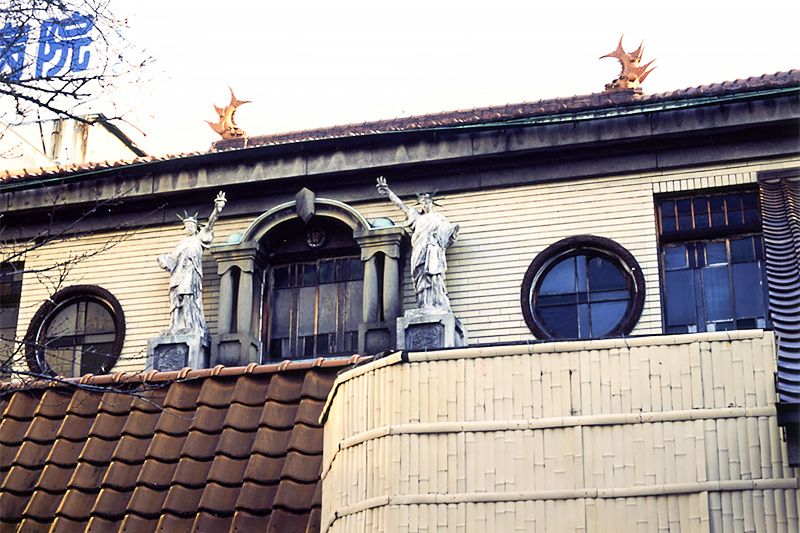 During World War II Japanese military police attempted to remove the duplicates of the Statue of Liberty but abandoned the plan as the figures were set too firmly in place.
During World War II Japanese military police attempted to remove the duplicates of the Statue of Liberty but abandoned the plan as the figures were set too firmly in place.
Danjiriyu (Kishiwada, Osaka)
Kishiwada is home to the famous Danjiri Matsuri, a raucous cart-pulling festival whose highlight is massive floats racing and careening through the streets of the city. The sentō takes its name from the festival and proudly displays a ¥100 million replica roof of a danjiri float above the entrance. Inside visitors will find rows of decorative paper lanterns and can enjoy such soaking pleasures as a whirlpool tub with eight settings, an outdoor bath, and saunas.
Danjiriyu
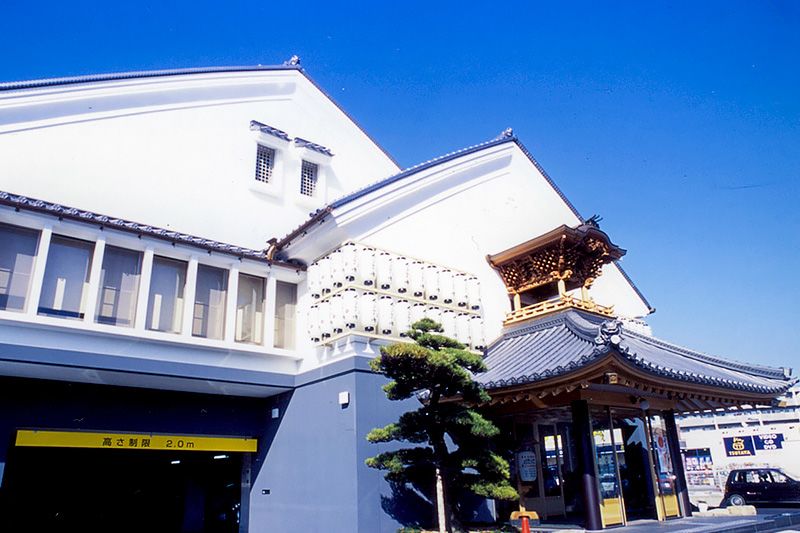 The entrance of Danjiriyu is as bold as the sentō’s namesake festival.
The entrance of Danjiriyu is as bold as the sentō’s namesake festival.
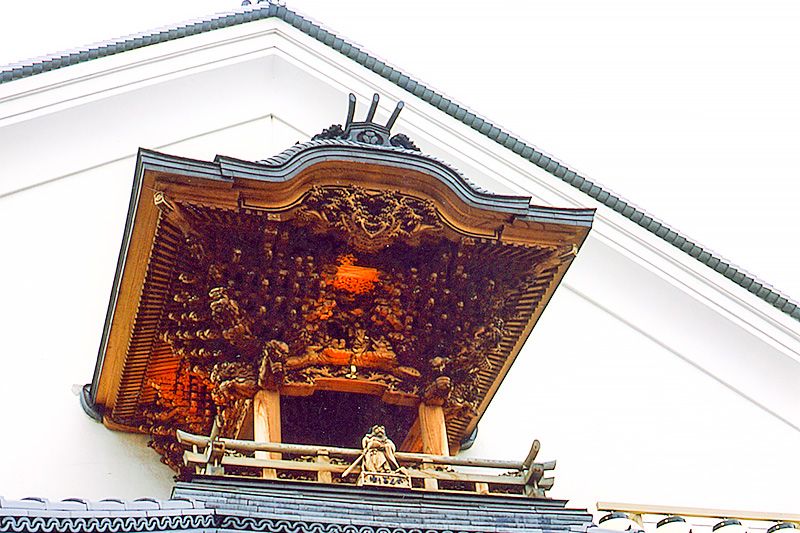 A close-up look shows the elaborate craftsmanship that is the hallmark of danjiri floats.
A close-up look shows the elaborate craftsmanship that is the hallmark of danjiri floats.
Nakanoyu (Ageda, Okinawa)
Nakanoyu is the southernmost public bathhouse in Japan and the only sentō in all of Okinawa Prefecture. Open for business since 1960, it is unusual in having no division between the changing and bathing areas. First-time visitors will also be surprised by forked hoses connecting the hot and cold spigots in the bathing area that serve as proxy shower heads. The alkaline bathwater that fills the white-tiled, oval tub is drawn from 350 meters underground.
Nakanoyu
